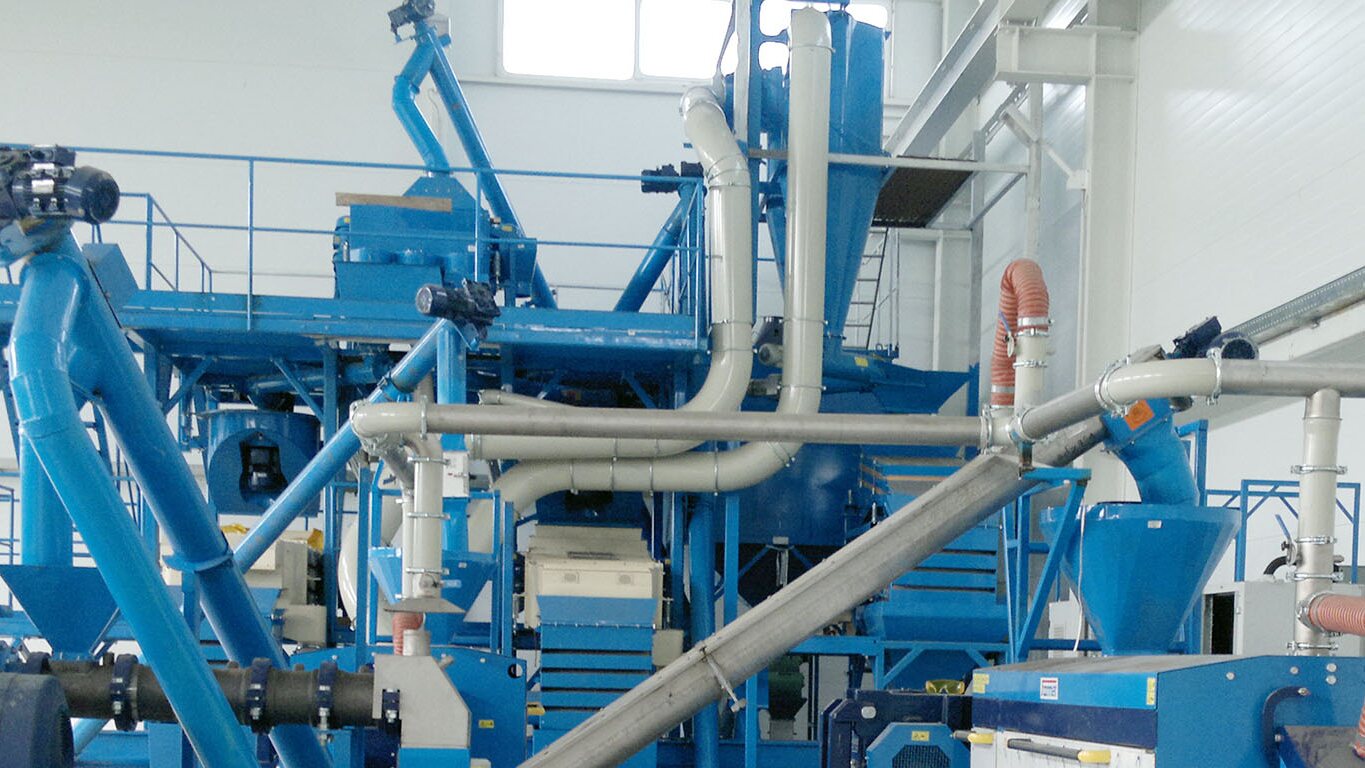This technology is an excellent solution for large-scale press shops. It is optimized for high oil yields and a high quality of press cakes for feed purposes.
Here is a list of advantages of dehulling prior to pressing (and achievable parameters):
1. Fibre content reduction leading to a higher-quality feed.
2. Increased oil yield.
3. Less wear of the pressing machinery.
4. Reducing wax and pigment content in oil.
This technology is an excellent solution for large-scale press shops. It is optimized for high oil yields and a high quality of press cakes for feed purposes.
Here is a list of advantages of dehulling prior to pressing (and achievable parameters):
After dehulling the seeds are sorted, at a first-stage sieve separator, into the following fractions:
Mid-size fraction from the stage I sorter is carried into the stage II sorter, where it is separated into fractions:
The technology can be supplemented with the feature “HULL CHECK”, whereby the already separated hulls are sieved and aspirated again. Oily dust along with kernel remains that have been aspirated are separated out, which lowers the loss of kernel material and therefore oil loss.
The company Farmet offers optional accessories that will satisfy even the most demanding customers. However, the most convenient solutions are usually our turnkey deliveries, which are optimized from both the technical and economic perspectives, meet all your requirements and include the automatization of the entire process.
The dehulling and hull separation technology is available at a spectrum of performance, using differently productive dehullers and separators. Based on equipment productivity and practical experience of use, we have assembled tried and tested configurations of dehullers and separators. These configurations are the most frequently implemented ones and they are well suited for the most common oilseed pressing technologies of the Farmet brand.
